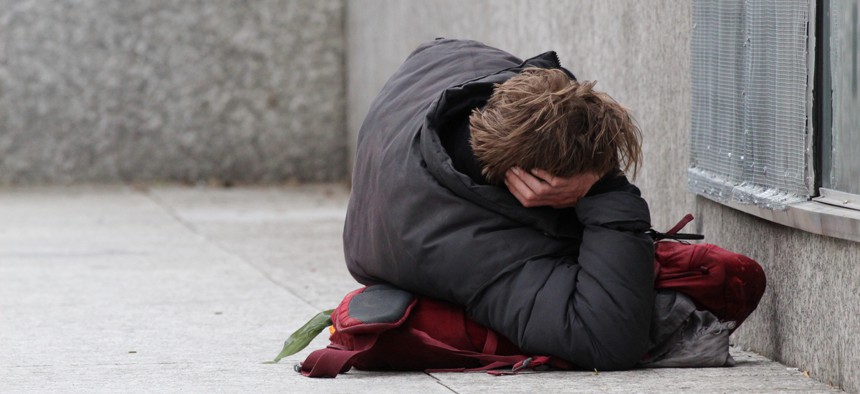'Deaths of Despair' Theory Overlooks Other Factors, Researchers Say

The "deaths of despair" theory postulates that working-class Americans, faced with a bleak economic future, have turned to drugs, suicide and alcohol to cope. Shutterstock
A lifetime of poverty and hard work contributes more broadly to the growing mortality gap between low-income people and those who are better off than drug overdoses and suicides, according to new research.
Lower life expectancies among less-educated Americans have more to do with poverty and hard work than with despair and drug overdoses, according to new research from the University of Michigan.
The study, published in June, tackled previous research about “deaths of despair,” the finding that Americans with less education have turned to drugs, alcohol and suicide to cope with bleak economic realities, fueling the growing gap in life expectancy between people with more education and those with less schooling.
Drugs, particularly opioids, do affect mortality rates, particularly among white people, wrote the team of Michigan researchers. But focusing on that at the exclusion of other risk factors, including disease, is short-sighted, they argued.
“Without a more complete understanding of the drivers of this growing inequity, the research and policy communities are at risk of focusing too narrowly on this single, currently prominent, behavioral risk rather than considering more fundamental causes,” the report says.
To examine the issue, the team examined census data on mortality rates and causes of death among black and white Americans ages 25 to 84 in 43 states and the District of Columbia from 1990 to 2015. Researchers used that information to estimate the years of life lost among people with different genders, ethnicities and levels of education.
Mortality rates grew among less-educated Americans during that time period, they found, while they decreased among better-educated people. The “lion’s share” of the growing gap occurred among older Americans between the ages of 65 and 84, likely the result of chronic conditions that build over a lifetime of stress..
“The less educated may be dying not only or primarily from hopelessness and maladaptive coping through alcohol or opioid abuse,” the report says, “but perhaps from engaging in high-effort coping with adversity, reflecting the hopeful belief that their economic uncertainty can be overcome with effort and tenacity.”
Prior research lends credence to that theory, the report notes. Several other studies found evidence that working-class people had a predisposition to keep trying to succeed in the face of adversity, which led to higher blood pressure, obesity and other risk factors for cancer and cardiovascular disease. Those diseases can take years to manifest, and affected every group examined in the study—unlike drug overdose deaths, which increased over time mainly for young white people.
“In all demographic groups studied, especially blacks, we found the contributions of growing educational inequities in cardiovascular disease, cancer, and other internal causes of death larger than the contributions of inequities in suicide or alcoholic liver disease,” the report says. “In sum, for the economically or socially most vulnerable, sustained experience with material, environmental, and psychosocial stressors” leads to poorer health outcomes, including death.
In light of that, the study’s authors cautioned public health researchers and advocates not to have tunnel vision when examining the growing mortality gap.
“Much like players of the classic ‘whack-a-mole’ arcade game, it is important we do not focus our attention on a single ‘mole’ while the others go unattended,” they wrote. “Even as we tackle the opioid epidemic, we should not lose sight of the widening educational mortality gap attributed to cardiovascular disease, cancers, and other internal causes.”
Kate Elizabeth Queram is a Staff Correspondent for Route Fifty and is based in Washington, D.C.
NEXT STORY: What Will Local Government Look Like in Space?





